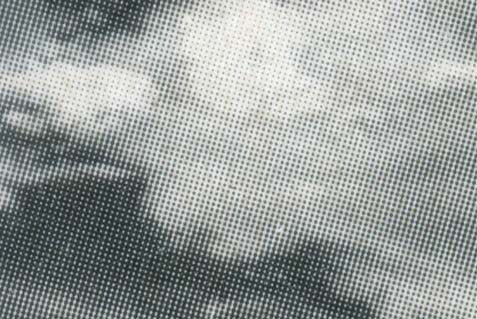Secrets of the Amazon—Tomo River
Viewing Room is an itinerant initiative of the Colección Patricia Phelps de Cisneros (CPPC), highlighting a single artwork through a short-term presentation and a discursive program around it hosted by different organizations. The Vera List Center is pleased to partner with the CPPC on Secrets of the Amazon—Tomo River.
Artists Gilda Mantilla and Raimond Chaves have spent several years investigating the role images have played in the imaginary and comprehension of the Peruvian Research Institute and the Center for Theological Studies of the Amazon, the latter founded by Father Joaquín García Sánchez and located in Iquitos, Peru. A 35mm-slide double-projection, Secrets of the Amazons—Tomo River is one of several artworks created from such experience. This work draws from a quasi travel-book of the Peruvian Amazons authored by a member of the military who was stationed in the region in the late twentieth century.
In this episode of Viewing Room, Secrets of the Amazon—Tomo River is on public display for an afternoon. In the evening, at the same space, architect Paulo Tavares shares his ongoing work on Amazonia, exploring the contested history of its representation and appropriation by the colonial-modern imaginary evident in cartographies, images and spatial designs. Through a forensic archaeology of the landscapes of Amazonia, Tavares approaches the forest as architecture, excavating the history of a territory whose nature is deeply cultural, shaped and reshaped by political conflicts. This public program intends to elucidate the different kinds of work being done in and about Amazonia to offer a broader context for better comprehending such a region, as well as the artwork on view.
Gilda Mantilla (Peru) and Raimond Chaves (Colombia) live in Lima, Peru; they have often developed work in collaboration while also keeping independent practices. Together, they represent Peru in the country’s inaugural pavilion at this year’s 56th Venice Biennale in Italy.
Originally from Campinas, Brazil, and working mainly from Quito, Ecuador, Paulo Tavares has been conducting an ongoing forensic study of the Amazon in Peru, Ecuador and Brazil. He has joined Princeton University as a research fellow for fall 2015.
This episode of Viewing Room is organized in collaboration with the Vera List Center for Art and Politics at The New School in New York, as part of the center’s 2015–17 curatorial programs on Post Democracy. It is open to the general public free of charge. RSVP is encouraged: rsvp [at] coleccioncisneros.org
Viewing Room is a charted journey through some recent acquisitions of the contemporary art collection of the CPPC. It consists of a series of events in NYC in which a single artwork is put on display with an accompanying public program. Audiences are invited to experience seminal yet rarely seen artworks—in most cases, never before exhibited in the city—and to participate in programs designed to help articulate the working processes and contexts in which these works were created.
A forthcoming episode of Viewing Room includes the presentation of The Catherwood Project, 1985–93, by Leandro Katz (Argentina). Earlier episodes featured The Fountain of Prosperity, 2006, by Michael Stevenson (New Zealand), with a panel discussion including Lauren Cornell, Jason Farago and Michael Taussig; Looting, 2010, by Regina José Galindo (Guatemala), with a lecture performed by Mark Beasley and Arto Lindsay; and, A Voyage or ‘With the MS Remscheid on the Amazon’ or the Account of a Voyage Under the Stars of the Refrigerator, 1968–72, by Lothar Baumgarten (Germany), with an artist’s talk moderated by Thomas Bartscherer.
Viewing Room is organized by Sofía Hernández Chong Cuy, curator of contemporary art at the CPPC, and artist Alejandro Cesarco. On the occasion of this episode of Viewing Room, they worked with Carin Kuoni, director/curator of the Vera List Center for Art and Politics.
With offices in New York and Caracas, the CPPC´s mission is to enhance appreciation of the diversity, sophistication, and range of art from Latin America; advance scholarship of Latin American art; and promote excellence in visual-arts education. Its art collection is organized in five different sections: ethnographic, colonial, traveler-artists, modern, and contemporary.
The Vera List Center for Art and Politics is an idea incubator and a public forum for art, culture, and politics. It was established at The New School in 1992—a time of rousing debates about freedom of speech, identity politics, and society’s investment in the arts. A pioneer in the field, the center serves a critical mission: to foster a vibrant and diverse community of artists, scholars, and policymakers who take creative, intellectual, and political risks to bring about positive change.



